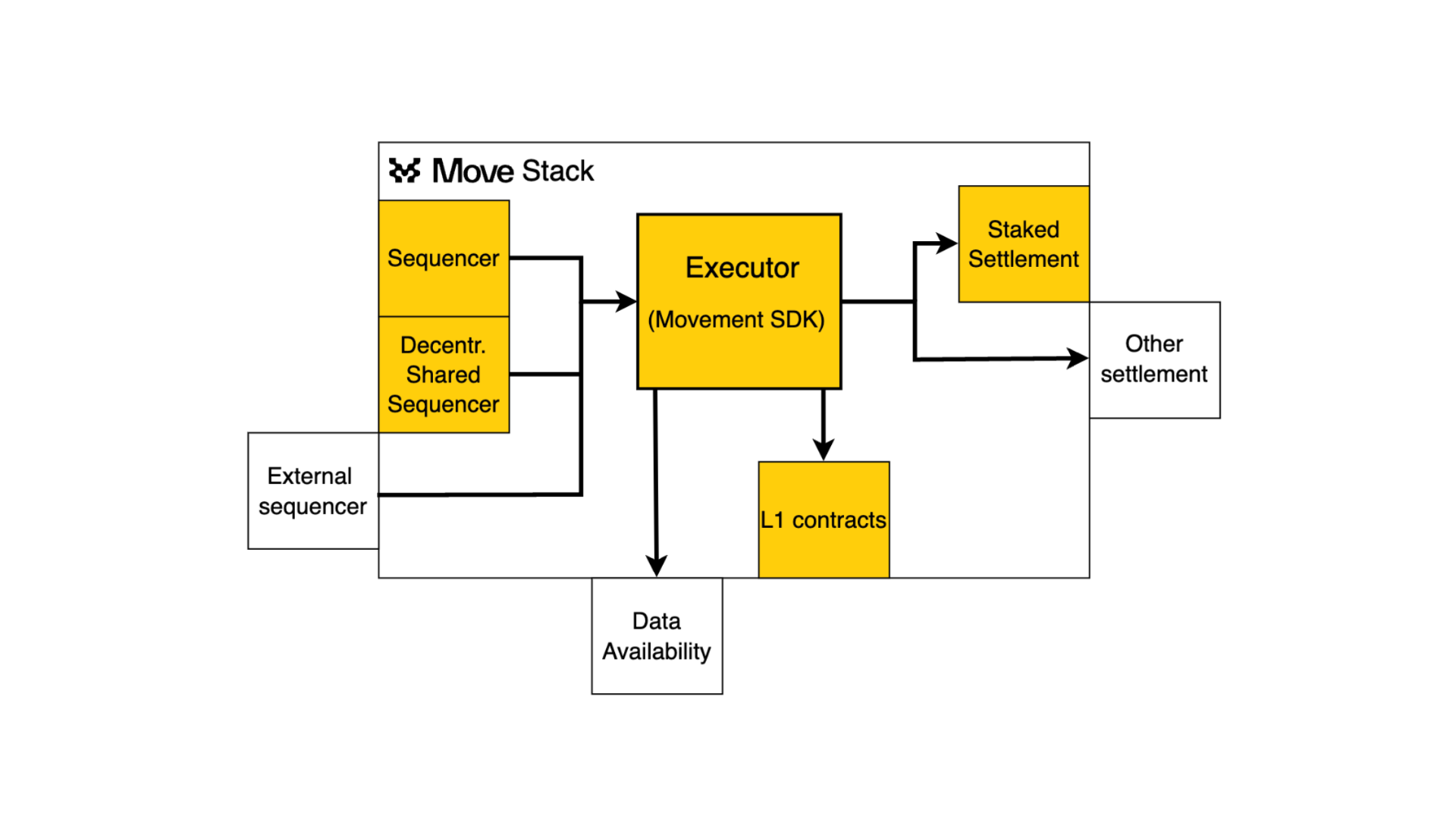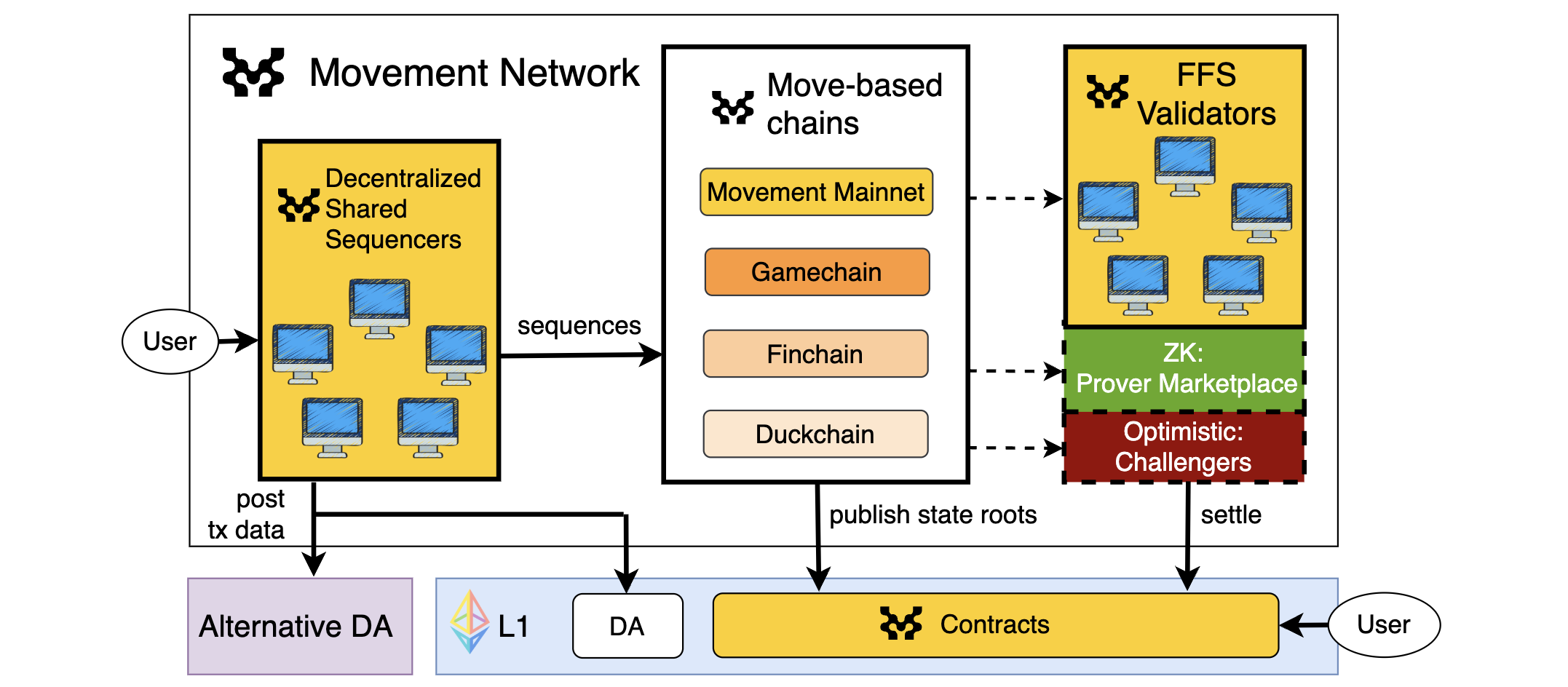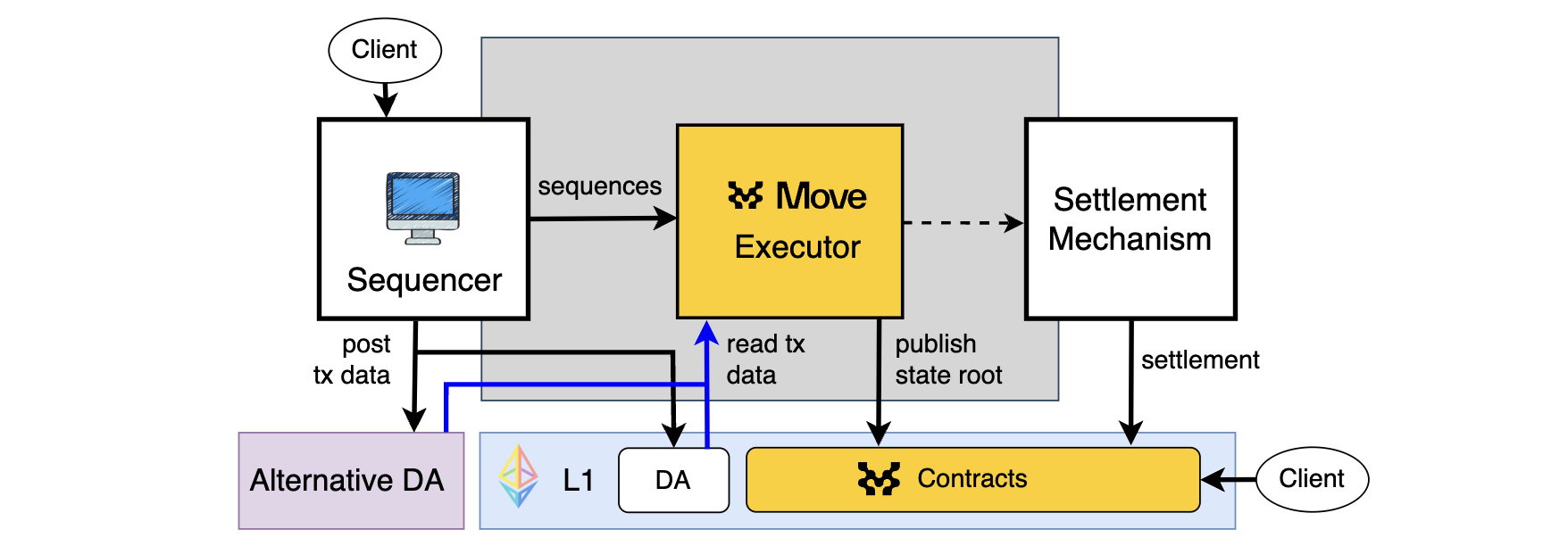Movement's Frameworks
The Movement Network provides a structured framework for deploying and managing Move-based blockchains. You can build, configure, and customize your own Move-based chain using the Move Stack and the Move Stack Chain Framework. These components ensure performance, security, and interoperability across the Movement ecosystem.
The Move Stack
The Move Stack equips you with essential tools to create scalable and efficient Move-based blockchains. It includes modular components for sequencing, data availability, and settlement, allowing you to tailor your chain to specific needs.

By leveraging the Move Stack, you can:
- Choose your sequencer model: Use the default decentralized shared sequencing service or set up a custom sequencing mechanism.
- Select a data availability solution: Store transaction data using Ethereum EIP-4844 blobs, 0G, Avail, Celestia, EigenDA, or Near.
- Define a settlement method: Implement optimistic (fraud-proof), ZK (validity-proof), or staked (attestations) settlement mechanisms.
The Move Stack ensures interoperability across key infrastructure components like wallets, developer APIs, and block explorers. This standardization simplifies integration and enhances user experience within the Movement ecosystem.
The Movement Network
The Movement Network enables seamless deployment of Move-based chains, ensuring fast finality settlement and shared economic security. You can leverage this framework to launch specialized chains for DeFi, gaming, and supply chain applications while benefiting from built-in cross-chain interoperability and liquidity.

With the Movement Network, you gain:
- Fast Finality Settlement (FFS) for near-instant transaction finality.
- Cross-chain interoperability that enables fluid asset movement.
- Multi-asset staking to enhance network security and decentralization.
Move Stack Chain Framework
The Move Stack Chain Framework provides a structured approach for building and deploying Move-based blockchains. You can configure its modular components to optimize execution, transaction ordering, and finality.

Core Components:
- Move Executor: Processes transactions and generates new L2 blocks.
- Bridge Contracts: Handle asset transfers between Layer 1 and Layer 2.
- Sequencer: Orders and batches transactions before execution.
- Data Availability Service: Ensures transaction data is accessible for settlement.
- Settlement Mechanism: Provides finality through ZK-proofs, fraud proofs, or fast finality attestations.
The framework’s modularity allows you to optimize security, cost, and speed by choosing the right combination of these components.
The Transaction Lifecycle
To build efficiently on Movement, you need to understand the transaction lifecycle. This sequence determines how transactions progress from initiation to final settlement.
The Transaction Flow:
Submission:
The user submits a transaction to the mempool.
Sequencing
The sequencer selects and orders transactions.
Data Publication
Transaction data is stored in the data availability layer.
Execution
The Move Executor processes transactions, updating the L2 state.
Settlement
The new state is finalized on L1 via bridge contracts.
This structured lifecycle ensures transaction security, consistency, and scalability across the network.